Craving a warm, hearty slice of bread without the blood sugar worry? You’ve come to the right place.
For anyone managing diabetes while navigating a gluten-free and vegan diet, finding a satisfying bread can feel like an impossible challenge. Store bought options are often loaded with starches and hidden sugars, and many homemade recipes just don’t deliver on texture or taste. Finding a great gluten free Oatmeal Bread that fits these needs is particularly difficult.
But this is not just another oat bread recipe. As a Diabetes Nutrition Specialist, I specifically developed this loaf for delicious flavor and stable blood sugar management. We’ll show you how to make a soft, flavorful loaf and explain the science behind why each ingredient works for you. This will empower you to enjoy bread with confidence.
Table of Contents
Why This Bread is Excellent for Diabetes Management
Understanding why a recipe works is key to taking control of your health. This Oatmeal Bread is built on a foundation of ingredients chosen for their positive impact on blood sugar levels.
- The Power of Fiber: This recipe is rich in soluble fiber from oats, which contain beta-glucans, and psyllium husk. This type of fiber is a superstar for diabetes management because it slows down the digestion and absorption of carbohydrates. This means no sharp, sudden spikes in blood sugar, just a gentle, gradual release of energy that keeps you feeling full and balanced.
- Low Glycemic Index (GI): The Glycemic Index measures how quickly a food raises blood sugar. Thanks to its high fiber and healthy fat content, this bread has a naturally lower GI than breads made with refined white flours or starches. It is designed to be a gentle option for your body.
- Net Carb Conscious: For diabetes meal planning, net carbs are often the most important number. We calculate this by taking the Total Carbohydrates and subtracting the Dietary Fiber. Because this recipe is packed with fiber, the net carb count per slice is significantly lower, making it much easier to incorporate into your daily carbohydrate goals without compromising your health.
- Healthy Fats & Protein: The inclusion of healthy fats from sources like ground almonds and protein contributes to satiety and a more gradual glucose response, helping you feel full longer and keeping your energy levels stable.
You’ll Also Love
➤ Gluten Free Vegan Zucchini Bread
➤ Gluten Free Vegan Pumpkin Bread
➤ Gluten-Free Vegan Oat Bread Recipe
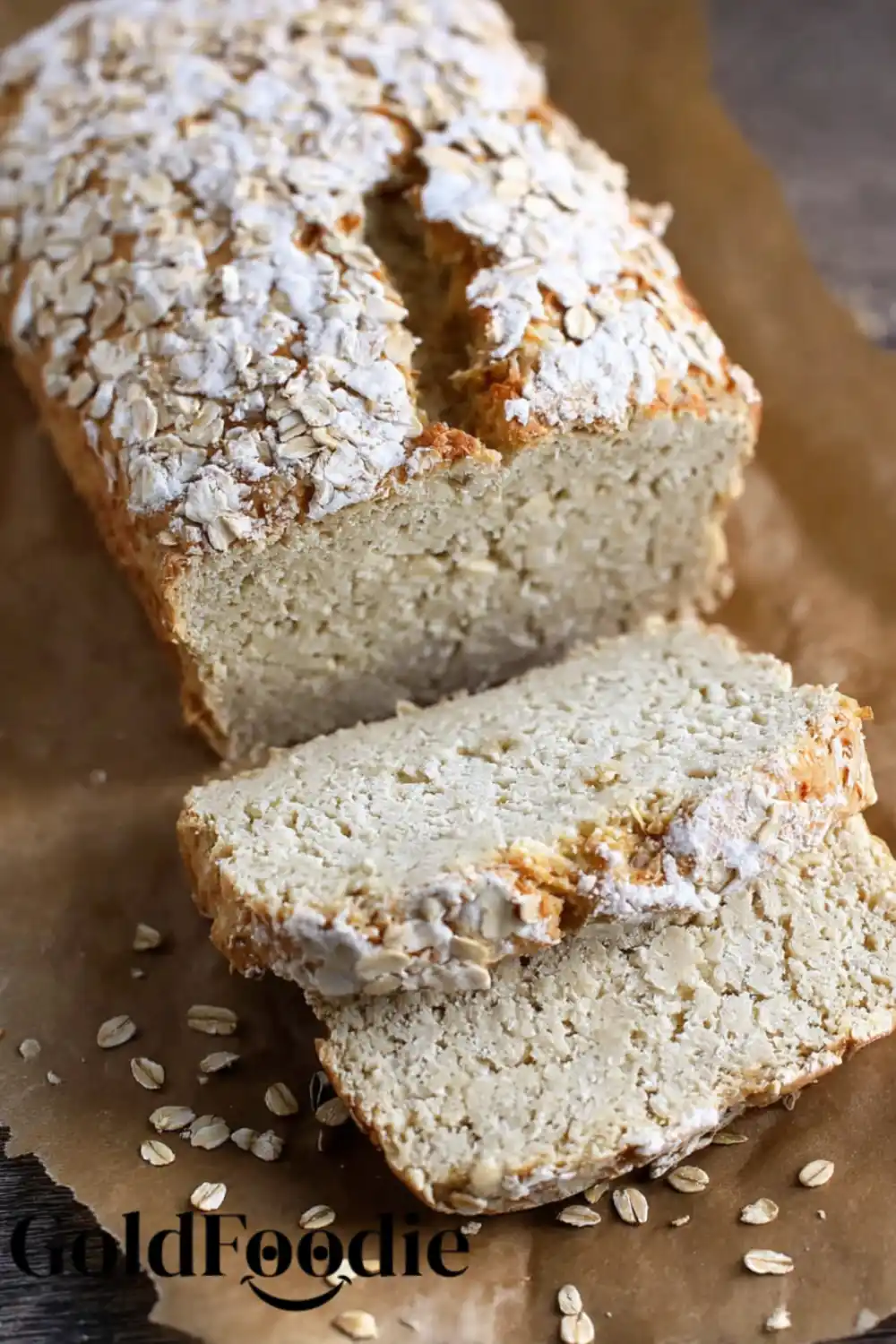
Ingredients Needed
Each ingredient in this Oatmeal Bread recipe is chosen for its specific nutritional benefits and role in creating a perfect, blood sugar friendly loaf.
- 150 g (1 ¼ cup) ground almonds (almond meal): This is our primary flour. It is low in carbohydrates and high in protein, healthy fats, and fiber, which helps create a soft texture and promotes stable blood sugar.
- 150 g (1 ¼ cup) gluten-free flour blend: A good all purpose blend provides structure. Look for one that uses a mix of flours like brown rice or sorghum rather than being purely starch based.
- 75 g (¾ cup) rolled oats: Be sure to use certified gluten free oats if you have celiac disease or a high sensitivity to gluten. The oats provide that classic hearty texture and soluble fiber.
- 2 heaped teaspoons baking powder: This is our main leavening agent, giving the bread its rise without any yeast.
- ¼ teaspoon bicarbonate of soda (baking soda): Works with the apple cider vinegar to create a light, airy crumb.
- ¼ teaspoon salt: Essential for enhancing all the other flavors in the bread.
- 300 ml (1 ¼ cup) unsweetened almond milk: Provides necessary moisture without adding any sugars. You can use any other unsweetened plant based milk.
- 1 tablespoon apple cider vinegar: The acidity reacts with the baking soda to help the bread rise beautifully. Lemon juice is a good substitute if needed.
- Rolled oats (optional for topping): A sprinkle on top before baking gives the finished loaf a lovely rustic appearance.
How to Make Diabetic-Friendly Oatmeal Bread
Follow these simple steps to create a perfect loaf. This process is straightforward and does not require any complex kneading or equipment.
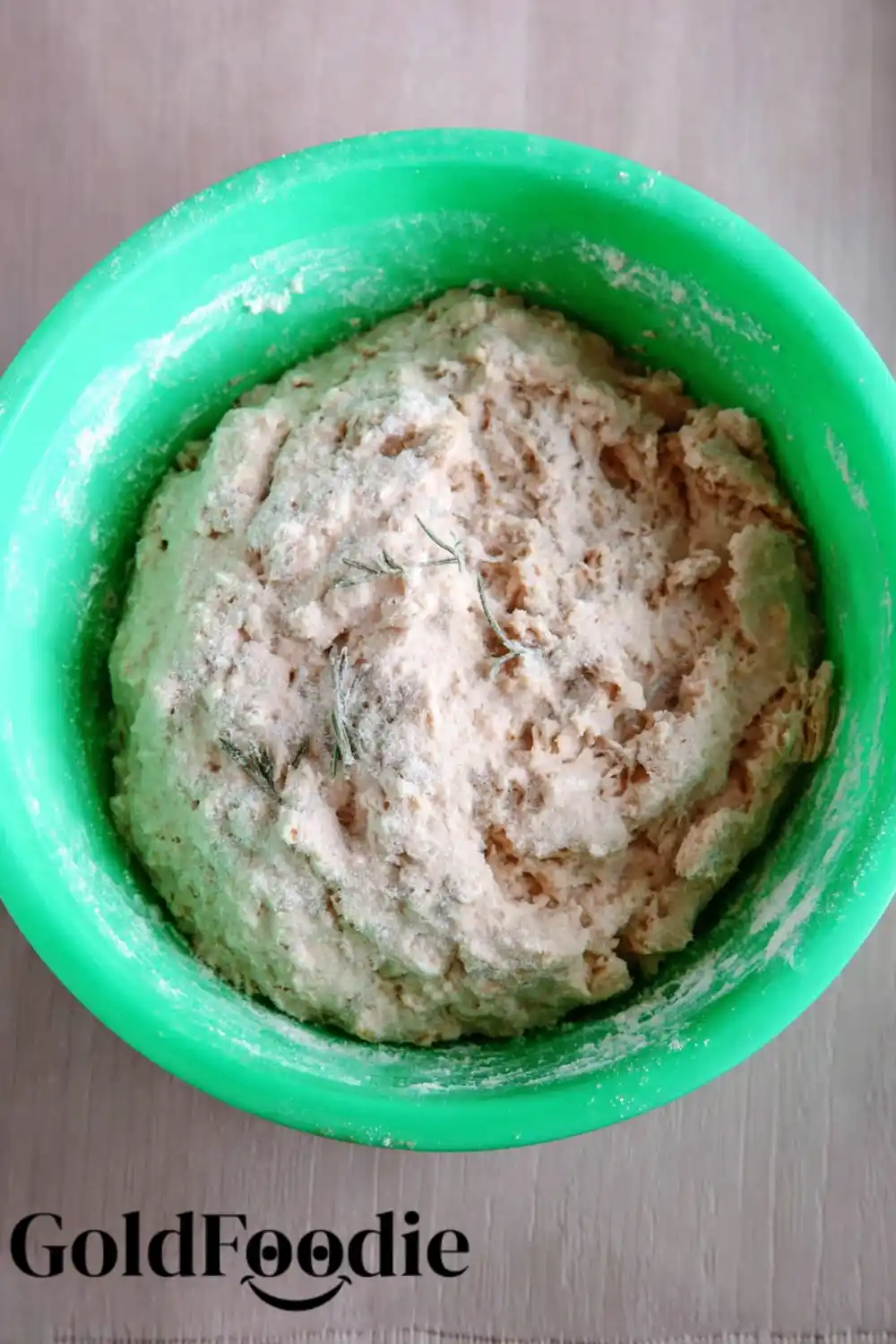
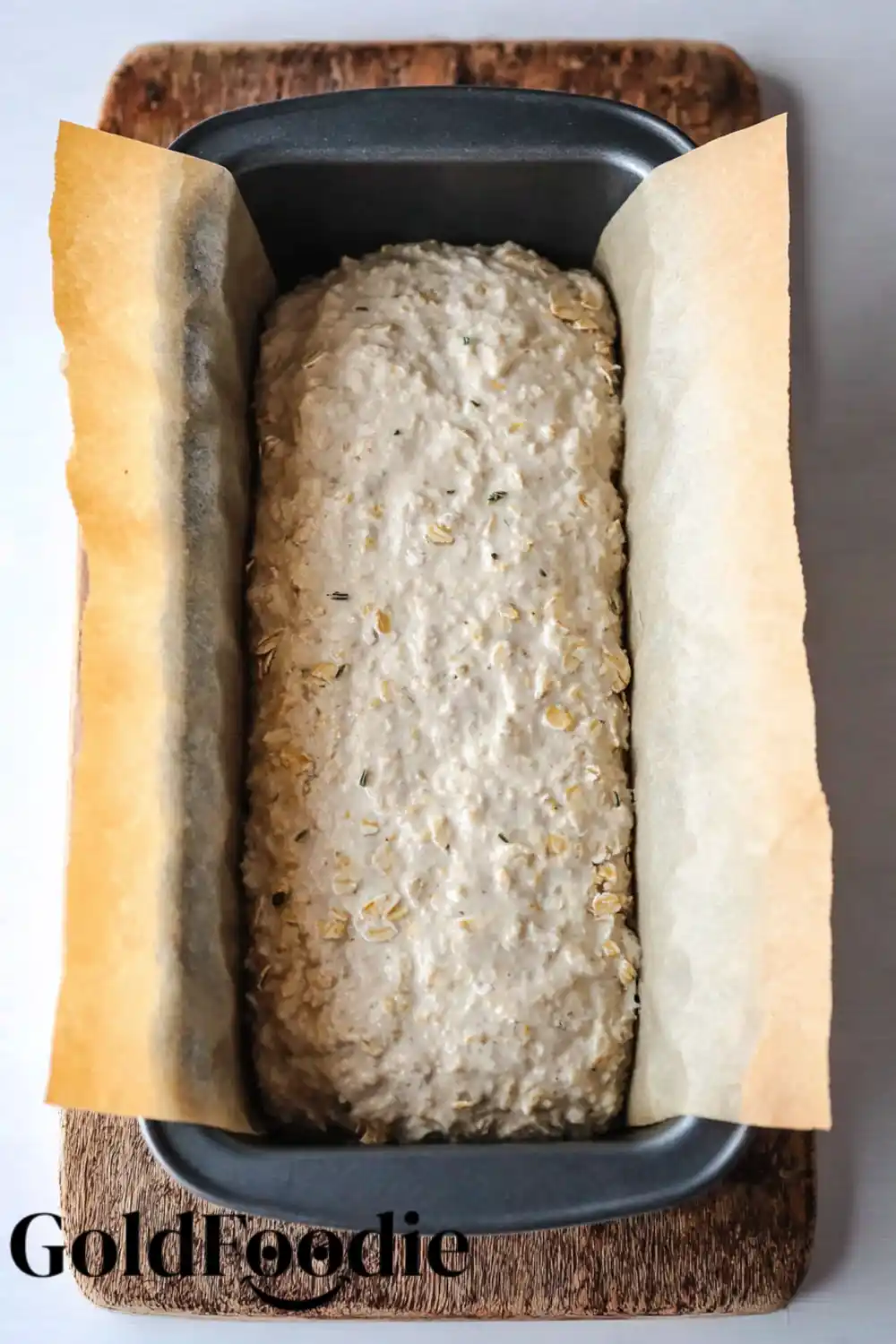
- Prepare Your Oven and Loaf Pan: First, preheat your oven to 180°C (350°F). This ensures the oven is at the correct temperature when the batter is ready, which is crucial for a good rise. Next, prepare a one-pound loaf tin by lining it with parchment paper. Leave a little extra paper hanging over the sides to act as handles for easy removal later.
- Combine the Dry Ingredients: In a large mixing bowl, add the ground almonds, gluten-free flour blend, rolled oats, baking powder, bicarbonate of soda, and salt. Use a whisk to mix these ingredients together thoroughly. This step is important because it evenly distributes the leavening agents (baking powder and soda), which guarantees a consistent texture throughout your Oatmeal Bread.
- Mix in the Wet Ingredients: Pour the unsweetened almond milk and apple cider vinegar directly into the bowl with the dry ingredients. Use a spatula or wooden spoon to mix everything together until just combined. The batter will be thick and moist. Avoid overmixing, as this can lead to a dense loaf.
- Transfer the Batter: Carefully spoon the batter into your prepared loaf pan. Use your spatula to spread it evenly, making sure it reaches all the corners. A level surface will help the bread bake evenly.
- Add the Finishing Touch: If you desire a rustic, bakery style look, sprinkle a few extra rolled oats over the top of the batter. There is no need to press them in; they will settle perfectly as the bread bakes.
- Bake to Perfection: Place the loaf pan in the center of your preheated oven. Bake for 40 to 45 minutes. You will know the bread is done when it has risen, appears golden brown, and a skewer or toothpick inserted into the center comes out clean, without any wet batter attached.
- Cool Completely: Once baked, remove the loaf from the oven and let it cool in the tin for about 10 minutes. Then, using the parchment paper handles, lift the bread out and place it on a wire rack to cool completely. This step is critical. Slicing warm bread can cause it to be gummy and fall apart. Allowing it to cool fully lets the crumb set, ensuring perfect slices.
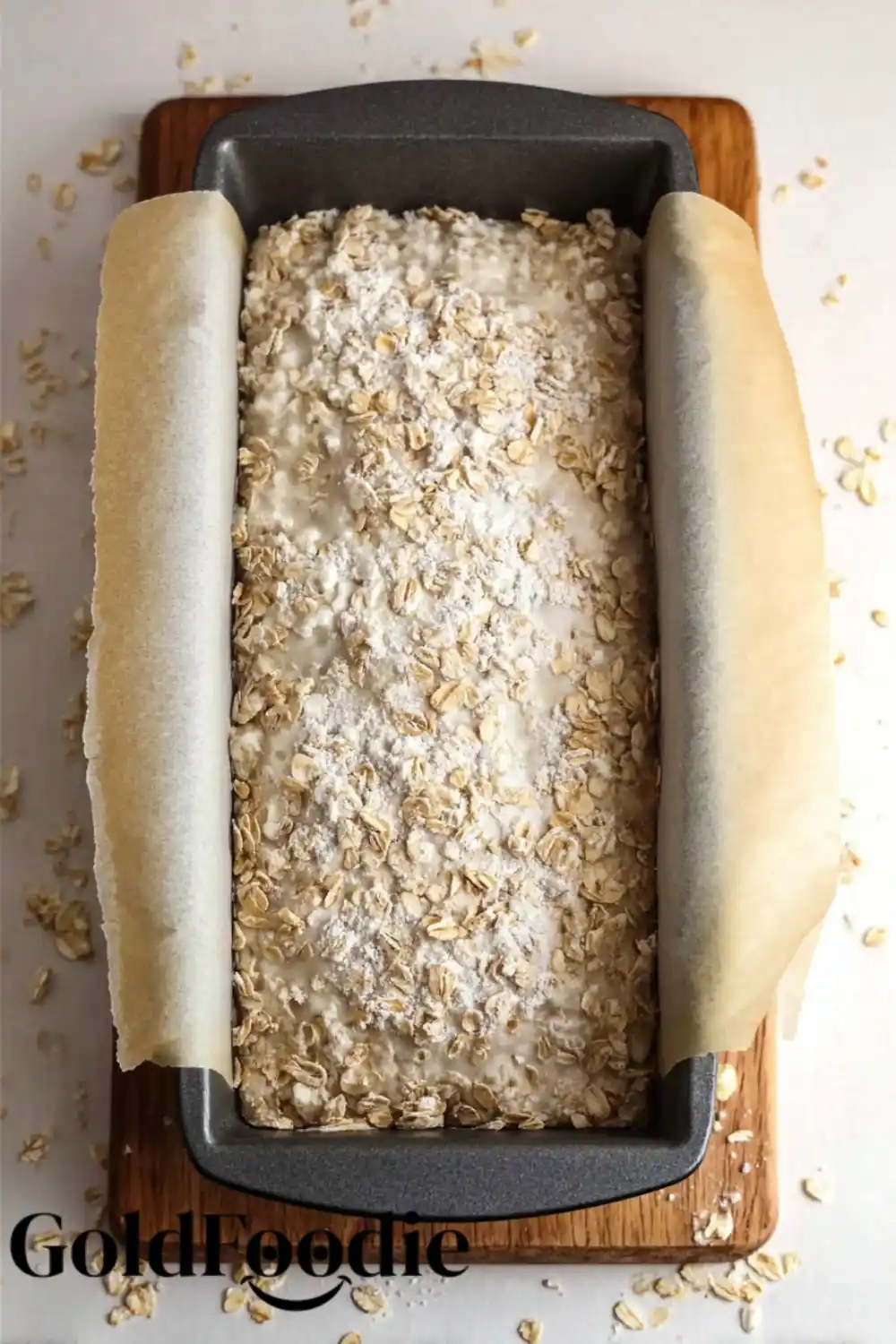
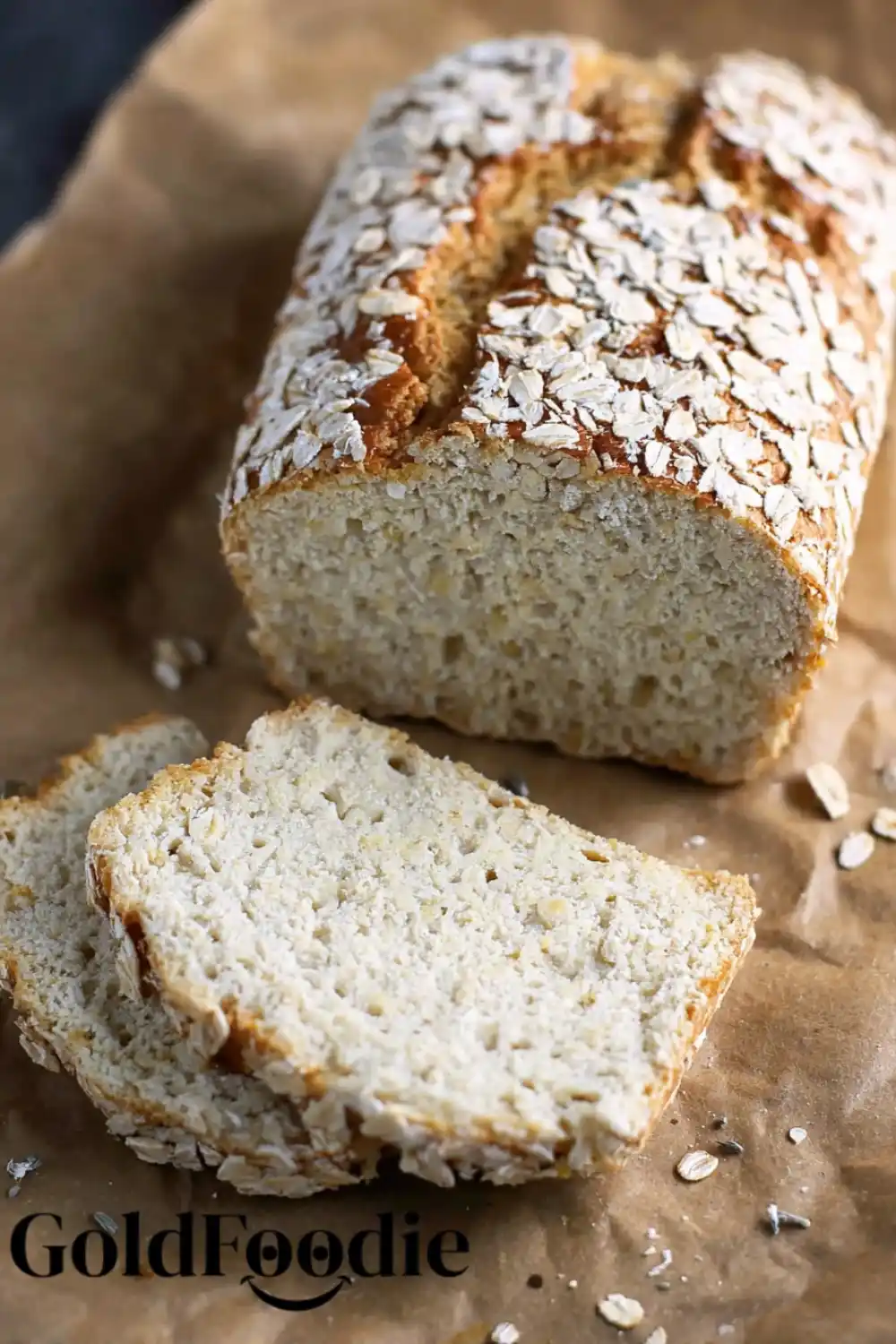
Gluten-Free Vegan Oatmeal Bread
Ingredients
Method
- Preheat oven to 180°C (350°F) and line a one-pound loaf tin with parchment paper, leaving overhang for easy removal.
- In a large mixing bowl, whisk together ground almonds, gluten-free flour blend, rolled oats, baking powder, bicarbonate of soda, and salt.
- Pour in unsweetened almond milk and apple cider vinegar. Stir with a spatula or wooden spoon until just combined. Avoid overmixing.
- Transfer the thick batter into the prepared loaf pan, spreading evenly.
- Sprinkle extra rolled oats on top for a rustic finish (optional).
- Bake for 40–45 minutes, until golden and a skewer inserted in the center comes out clean.
- Cool in the tin for 10 minutes, then lift out using parchment and transfer to a wire rack to cool completely before slicing.
Notes
Nutrition Facts
Amount Per Serving Calories 134 | Calories from Fat 63 | Fat 7g | 11% | Sodium 104mg | 4% | Potassium 39mg | 1% | Carbohydrates 15g | 5% | Fiber 3g | 12% | Protein 4g | 8% | Calcium 74mg | 7% | Iron 1.1mg | 6% | *Percent Daily Values are based on a 2,000 calorie diet.Expert Tips & Troubleshooting for Perfect Results
Achieve a flawless loaf every time with these professional tips. A little extra knowledge can make all the difference in gluten free baking.
- Tip: The Importance of Cooling. It is tempting to slice into a warm loaf, but you must let this Oatmeal Bread cool completely. The internal structure needs time to set as it cools. Slicing it prematurely will result in a gummy texture and crumbly slices. Patience will be rewarded with a perfect texture.
- Tip: Measuring Flour Correctly. For the most accurate results, use a kitchen scale. If you do not have one, use the “spoon and level” method. Use a spoon to scoop the flour into your measuring cup until it is overflowing, then use the back of a knife to level it off. Do not pack the flour down, as this will result in a dry bread.
- Troubleshooting: My Bread is Gummy or Wet Inside. This is the most common issue in gluten free baking and usually means the bread is slightly underbaked. If the top is browning too quickly but the center is still wet, cover the loaf loosely with aluminum foil and continue baking for another 5 to 10 minutes. Always test with a skewer in the absolute center of the loaf.
- Troubleshooting: My Bread Didn’t Rise Much. This is almost always related to the leavening agents. Ensure your baking powder and baking soda are fresh and not expired. Old leavening agents lose their potency and will not give your Oatmeal Bread the lift it needs.
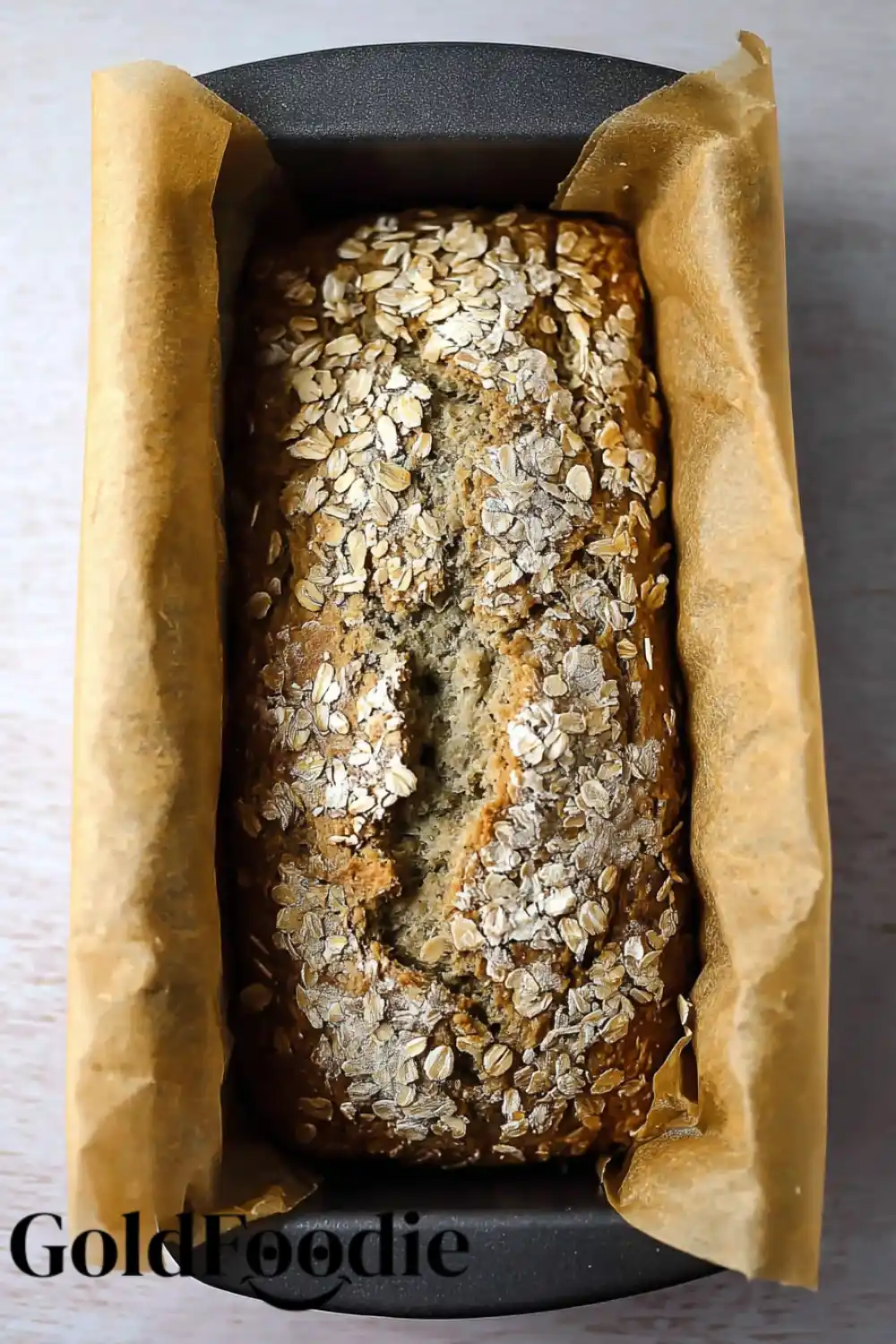
Serving and Storage
Properly storing your bread will keep it fresh and delicious. Here are the best ways to serve and store your homemade loaf.
- Serving Suggestions: This versatile Oatmeal Bread is delicious on its own or lightly toasted. For a savory option, top a slice with mashed avocado and a sprinkle of sea salt. For a satisfying snack, spread it with your favorite sugar free nut butter.
- Counter Storage: To keep the bread fresh, store it in an airtight container at room temperature. It will stay soft and moist for up to 3 days.
- Freezing for Longevity: This bread freezes beautifully, making it perfect for meal prep. Once the loaf has cooled completely, slice the entire loaf. Place the slices in a freezer safe bag or container, separating layers with parchment paper if you wish. You can then toast slices directly from frozen for a quick and easy breakfast or snack.
Helpful Notes
Here are a few extra points to ensure your baking experience is a success.
- You can use almond flour as a direct substitute for the ground almonds or almond meal in this recipe. They are essentially the same product and will yield the same great results for your Oatmeal Bread.
- The vinegar is a crucial component. Its acidity reacts with the baking soda to create the lift that makes the bread light and airy. If you do not have apple cider vinegar, an equal amount of lemon juice will work perfectly as a substitute.
- For an even lighter texture, some people have had success using an electric mixer to beat a bit of air into the batter before pouring it into the pan. While I have not tested this method myself, it is an option you can explore.
Frequently Asked Questions (Diabetes & Baking)
Here are answers to some common questions about this recipe and how it fits into a diabetic lifestyle.
Is oatmeal bread actually good for a person with diabetes?
While many store bought or traditional oatmeal breads can be high in sugar and refined flour, this specific Oatmeal Bread recipe is different. It is designed with diabetes in mind, using high fiber ingredients like oats and almond meal, and no added sugar. This combination helps to manage blood sugar levels much more effectively.
How many slices of this bread can I eat?
This is a very personal question, as carbohydrate needs vary for each individual. A good starting point is one slice. See how it affects your personal blood sugar levels. Because it is high in fiber and protein, you may find one slice is very satisfying. Always consult with your doctor or dietitian to determine the right portion sizes for your meal plan.
Can I add nuts or seeds to this recipe?
Absolutely. Adding seeds like chia, flax, or pumpkin seeds, or chopped nuts like walnuts, can further increase the fiber and healthy fat content. We recommend adding up to a half cup of your chosen mix. Just remember this will slightly alter the final nutritional information per slice.
Can I substitute a different type of flour?
Gluten free baking is very precise. The almond meal is key to the low carb profile of this Oatmeal Bread. While we have not tested other flours, if you must make a substitution for the gluten free flour blend, look for another high quality, all purpose blend. Results may vary.
How do I store this bread to keep it fresh?
As mentioned in the section above, the best way to store the bread is in an airtight container at room temperature for up to three days. For longer storage, we highly recommend slicing the cooled loaf and freezing it.
Medical Disclaimer
This Oatmeal Bread recipe is provided as a general guide and should not be considered medical advice. The information on this website is for informational purposes only and is not intended to be a substitute for professional medical advice, diagnosis, or treatment. Always seek the advice of your physician or other qualified health provider with any questions you may have regarding a medical condition.
Final Thoughts
This gluten free vegan Oatmeal Bread is a true game changer for anyone looking to enjoy delicious, homemade bread while managing their health. It proves that you do not have to sacrifice flavor or texture for a blood sugar friendly option. With its high fiber content and low net carb count, this loaf is designed to nourish your body and satisfy your cravings.
If you bake this Oatmeal Bread, please let me know how it turns out! Leave a comment below and a star rating to help other readers. We love seeing your creations, so feel free to share a photo on Pinterest or Facebook.
What is your favorite topping for a slice of healthy bread? We would love to hear your ideas in the comments!
Diabetes Nutrition Specialist | Healthy Diet Advocate | Founder of GoldFoodie.
My passion for nutrition began with a deeply personal journey supporting my father through his battle with diabetes. Watching his daily struggles made me realize how powerful the right food choices can be in improving quality of life. That experience drove me to dedicate my career to helping others live healthier, more balanced lives.






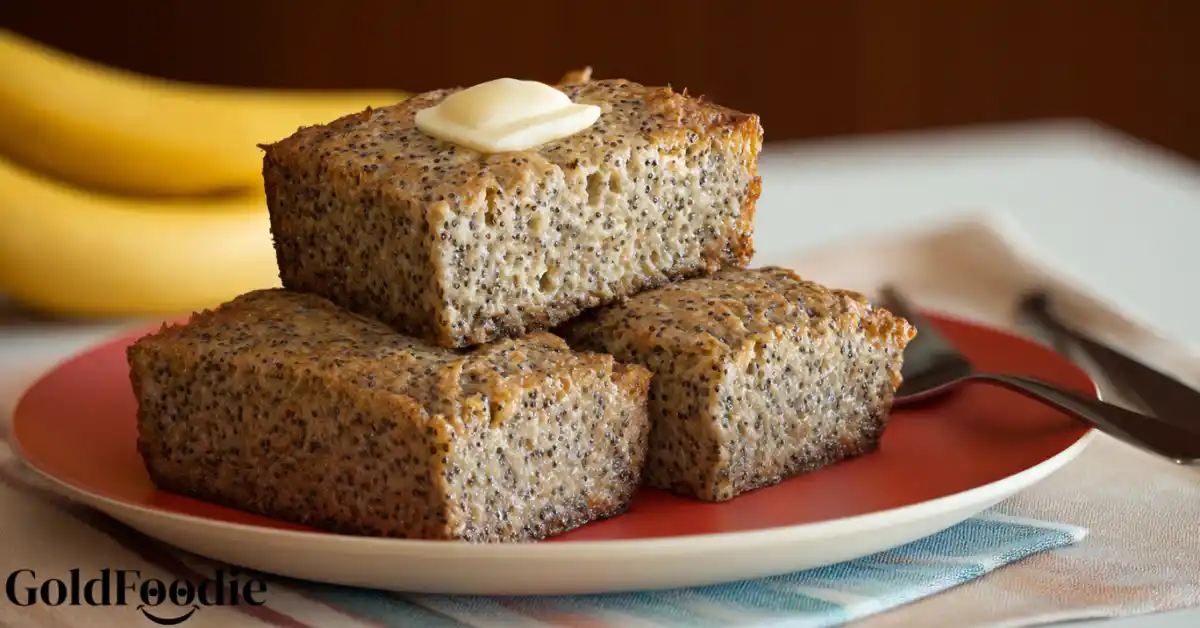
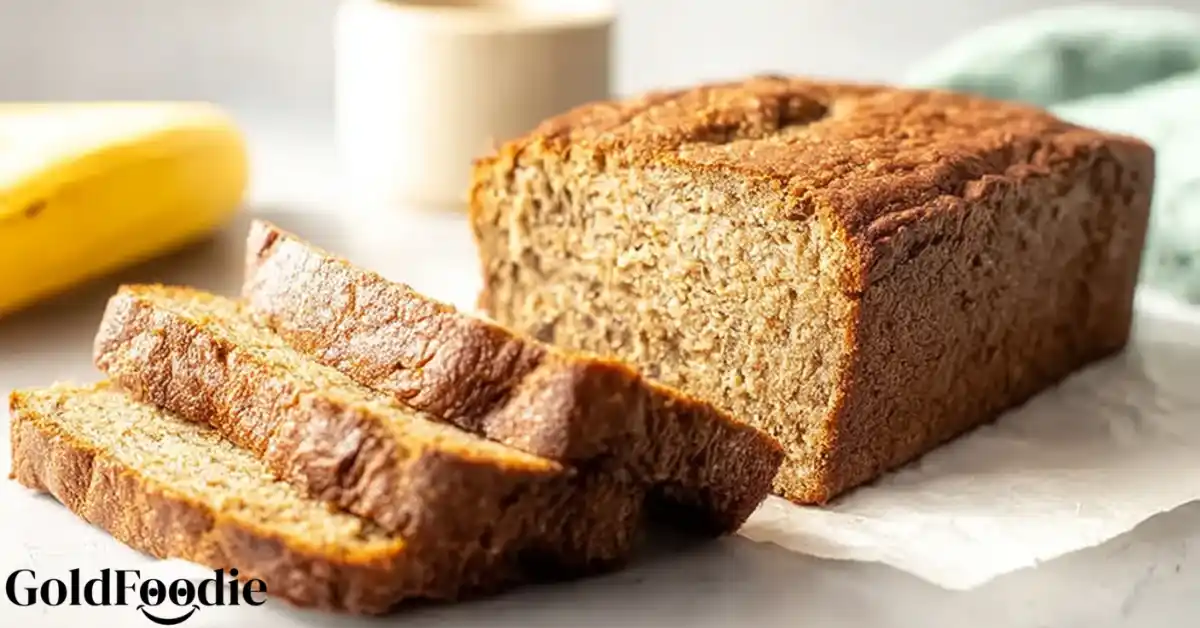
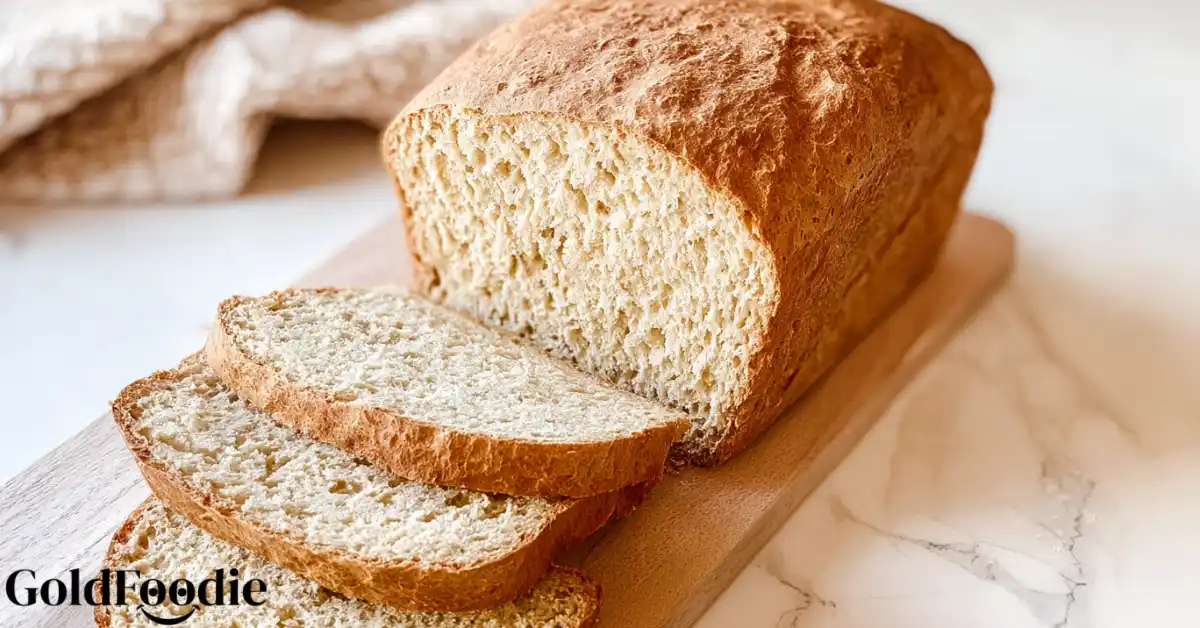
3 thoughts on “Gluten-Free Vegan Oatmeal Bread”